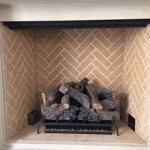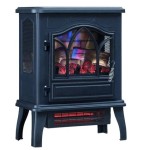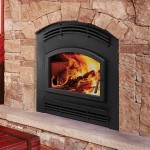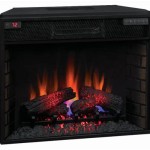Gas Fireplace Ashes: A Comprehensive Guide
Gas fireplaces, unlike their wood-burning counterparts, offer convenience and efficiency, producing heat without the associated mess of wood and extensive ash buildup. However, the term "ashes" in the context of a gas fireplace can be misleading. What is typically found is not the byproduct of burning wood, but rather a combination of debris, dust, and the potential accumulation of inorganic material from the gas combustion process and the decorative elements within the fireplace itself. Understanding the composition of this material and the proper methods for cleaning and maintaining a gas fireplace is crucial for optimal performance and longevity.
While gas fireplaces rely on natural gas or propane for fuel, these fuels do not leave a significant amount of ash as wood does. The residue observed is generally a mixture of environmental dust that enters the fireplace, fibers from carpets or upholstery, and, depending on the design of the fireplace, small amounts of soot or mineral deposits. Furthermore, decorative elements such as ceramic logs, stones, or glass beads can degrade over time, contributing to the accumulation of particulate matter at the bottom of the firebox. These elements, particularly ceramic logs, are subject to thermal stress and can chip or crumble with repeated heating and cooling cycles.
Ignoring this accumulation of debris can lead to several problems. Dust and debris can obstruct the burner ports, reducing efficiency and potentially leading to incomplete combustion. This incomplete combustion can, in turn, result in the production of carbon monoxide, a colorless and odorless gas that is hazardous to human health. Additionally, accumulated material can affect the aesthetic appeal of the fireplace, obscuring the flames and making the fireplace appear less appealing. Regular inspection and maintenance are, therefore, essential for safe and efficient gas fireplace operation.
Identifying the "Ashes" in Your Gas Fireplace
The first step in managing the residue in a gas fireplace is understanding its composition. Unlike wood ash, which is largely composed of calcium, potassium, and other minerals derived from wood, the "ashes" in a gas fireplace are primarily inorganic. The primary components commonly include:
- Dust and Debris: This is the most significant component, consisting of airborne particles that settle within the fireplace.
- Ceramic Log Fragments: Over time, the ceramic logs can break down due to thermal stress, depositing small fragments in the firebox.
- Mineral Deposits: Small amounts of mineral deposits may form from impurities in the gas supply.
- Soot: Although gas burns relatively cleanly, minor soot deposits can occur, especially if the burner is not properly adjusted.
The amount and composition of the residue will vary depending on factors such as the age of the fireplace, the frequency of use, the quality of the gas supply, and the type of decorative elements present. A careful visual inspection can help determine the primary components of the accumulated material.
Cleaning Procedures for Gas Fireplace Residue
Cleaning a gas fireplace involves more than simply removing the visible "ashes." A thorough cleaning ensures optimal performance and safety. The following steps are recommended:
- Safety First: Always turn off the gas supply to the fireplace before commencing any cleaning or maintenance. Ensure the fireplace is completely cool.
- Remove Decorative Elements: Carefully remove the ceramic logs, stones, or glass beads. Handle these elements with care, as they can be fragile.
- Vacuum the Firebox: Using a vacuum cleaner with a brush attachment, thoroughly vacuum the interior of the firebox, paying particular attention to the burner area. A shop vacuum is often preferred for this task due to its ability to handle fine dust and debris.
- Clean the Burner: Use a soft brush or compressed air to gently clean the burner ports. Avoid using any sharp objects that could damage the burner. In some cases, a specialized burner cleaning tool may be necessary. Consult the fireplace's manual for specific recommendations.
- Clean Decorative Elements: Gently clean the ceramic logs, stones, or glass beads with a soft brush and mild detergent. Rinse thoroughly and allow them to dry completely before replacing them in the fireplace.
- Inspect and Reassemble: Inspect all components for damage before reassembling the fireplace. Ensure that all connections are secure and that the decorative elements are positioned correctly, following the manufacturer's instructions.
- Test the Fireplace: After reassembling the fireplace, turn on the gas supply and test the fireplace to ensure it is operating correctly. Observe the flame pattern for any irregularities. If problems are observed, consult a qualified technician.
Preventative Measures and Long-Term Maintenance
Regular cleaning and preventative maintenance can significantly reduce the accumulation of residue and ensure the long-term performance of a gas fireplace. Consider the following tips:
- Regular Inspections: Inspect the fireplace regularly, at least once a year, for signs of damage or excessive debris accumulation.
- Professional Servicing: Schedule professional servicing every one to two years. A qualified technician can perform a more thorough inspection, clean the burner, and check for gas leaks or other potential problems.
- Air Filter Maintenance: If the fireplace has an air filter, clean or replace it regularly according to the manufacturer's recommendations.
- Proper Ventilation: Ensure that the fireplace is properly ventilated to prevent the buildup of carbon monoxide.
- High-Quality Components: When replacing decorative elements, choose high-quality ceramic logs, stones, or glass beads that are designed to withstand the high temperatures of a gas fireplace.
By understanding the nature of the residue in a gas fireplace and implementing proper cleaning and maintenance procedures, homeowners can ensure the safe, efficient, and aesthetically pleasing operation of their appliance for years to come. A proactive approach to maintenance is crucial for maximizing the lifespan and performance of a gas fireplace.

Glowing Embers For Fireplace Mother Daughter Projects

Glowing Embers In A Fireplace Magic Touch Mechanical

Gas Vs Wood Burning Fireplaces Is It Worth Converting Capital Chimney Corp

Gas Fireplace Operation How Do They Work Early Times

Advantages Of Installing Gas Fireplaces Lopi

Majestic 6 Piece Refractory Cement With Burner Gas Log Sets Vdy30d3r North Country Fire

Importance Of Gas Fireplace Service Prince Frederick Md Chesapeake

How To Choose Your Gas Fireplace Logs

Beautiful Gas Burning Fireplace Log Installations Buffalo Rochester Ny

Operating Gas Logs Nashville Tn Ashbusters Chimney








